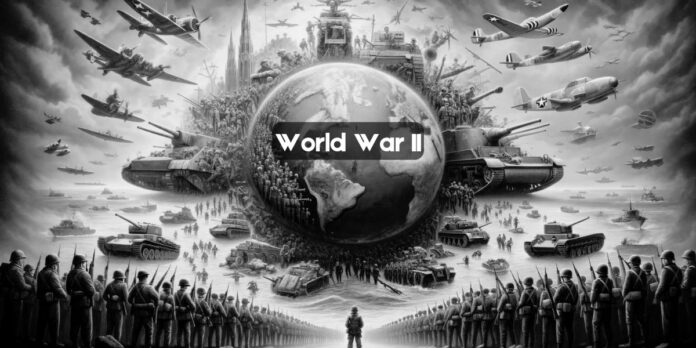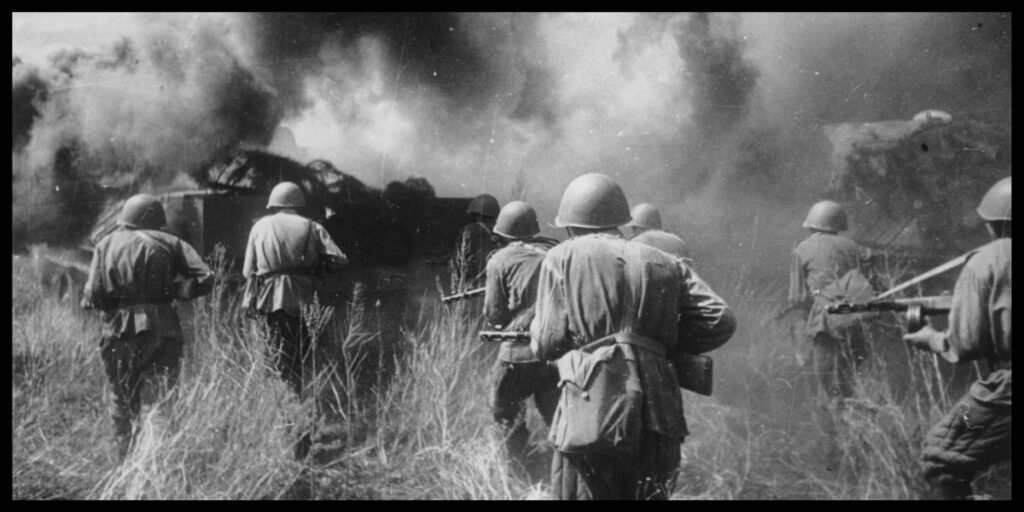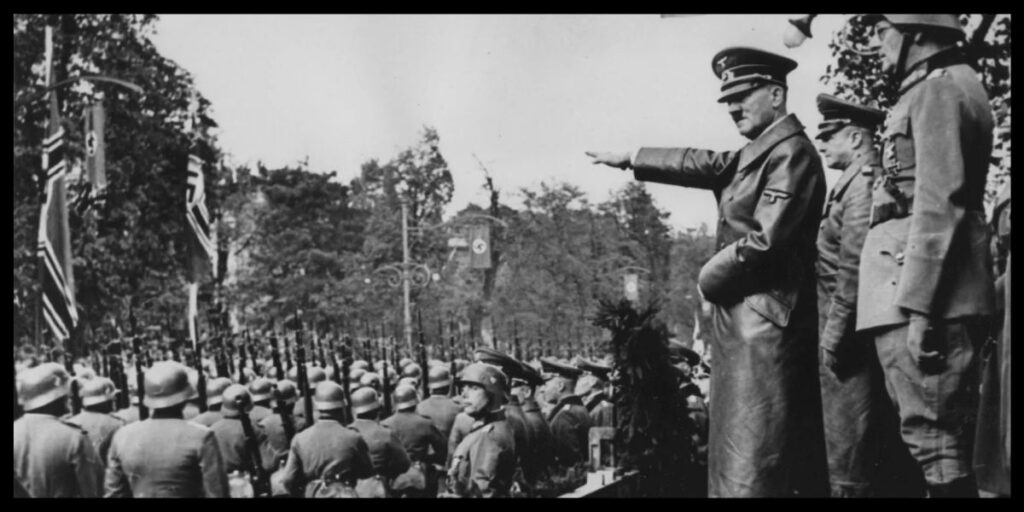World War II (1939-1945) was one of the most significant and devastating conflicts in human history. Involving more than 30 countries and resulting in profound changes to the political, social, and economic landscape of the world. This global war, fought between two major alliances — the Allies and the Axis powers — was triggered by a series of political and economic factors and led to massive destruction and loss of life. But also significant technological and scientific advancements. By the time the war ended, it had fundamentally altered the course of history.
The Origins of World War II
The roots of World War II can be traced back to the unresolved issues from World War I. Particularly the harsh terms imposed on Germany by the Treaty of Versailles in 1919. This treaty crippled the German economy, fueled resentment among its people, and sowed the seeds of extremism. The rise of Adolf Hitler and the Nazi Party, who capitalized on this dissatisfaction. This led to the militarization of Germany and its aggressive foreign policy aimed at territorial expansion.
Hitler’s vision of creating a “Greater Germany” began with the annexation of Austria in 1938 and the occupation of Czechoslovakia in 1939. However, it was his invasion of Poland on September 1, 1939. That prompted Britain and France to declare war on Germany, officially marking the beginning of World War II.
While Europe became the primary theater of war, conflicts soon erupted across the globe, including in Asia, Africa, and the Pacific, as nations aligned themselves with either the Axis or the Allied powers.
Major Players and Alliances
The two main opposing alliances in World War II were the Allies and the Axis powers.
- The Allies: The primary members of the Allied powers were the United States. The United Kingdom, the Soviet Union, China, and France. Many other countries, including Canada, Australia, and New Zealand, also contributed troops and resources to the war effort. The Allies fought to stop the expansion of Axis powers and to defend the principles of democracy and sovereignty.
- The Axis Powers: The Axis was primarily made up of Germany, Italy, and Japan. These nations pursued aggressive territorial expansion, seeking to establish dominance in Europe, Africa, and Asia. They were motivated by fascist ideologies that emphasized militarism, nationalism, and totalitarian control.
Key Events and Turning Points
World War II was marked by several key battles and turning points that shaped the outcome of the war.
- The Blitzkrieg and the Fall of France (1940): Germany employed a new military tactic known as “Blitzkrieg” or lightning war. Which involved fast-moving, coordinated attacks using tanks, planes, and infantry. This strategy led to the rapid fall of France in 1940. Leaving Britain to stand alone against the Nazi threat in Europe.
- The Battle of Britain (1940): After the fall of France, Hitler attempted to invade Britain. The Royal Air Force successfully defended the skies during the Battle of Britain, marking the first major defeat for Nazi Germany and proving that Hitler could be stopped.
- The Attack on Pearl Harbor (1941): On December 7, 1941, Japan launched a surprise attack on the U.S. naval base at Pearl Harbor, Hawaii. This event brought the United States into the war and shifted the balance of power in favor of the Allies. Shortly after, Germany and Italy declared war on the U.S., turning the conflict into a truly global war.
- The Eastern Front and the Battle of Stalingrad (1942-1943): The German invasion of the Soviet Union in 1941 was one of the largest and deadliest military campaigns in history. The Battle of Stalingrad, which lasted from 1942 to 1943, became a turning point as the Soviet Union dealt a decisive blow to Germany. Marking the beginning of the Axis retreat in Eastern Europe.
- D-Day (1944): The Allied invasion of Normandy, France, on June 6, 1944, known as D-Day, was a critical moment in the liberation of Western Europe from Nazi control. The successful landing of Allied forces opened up a second front against Germany, hastening the end of the war in Europe.
- The Pacific Theater and the Atomic Bomb (1945): In the Pacific, the United States engaged in a brutal island-hopping campaign against Japan. The war culminated in the dropping of two atomic bombs on the cities of Hiroshima and Nagasaki in August 1945, leading to Japan’s surrender and the end of World War II.
The Aftermath and Consequences
The consequences of World War II were far-reaching and shaped the geopolitical landscape for decades to come. The war resulted in the deaths of an estimated 70 to 85 million people, including civilians, and soldiers. And victims of the Holocaust, in which six million Jews were systematically murdered by the Nazis.
- The United Nations: In the aftermath of the war, the United Nations (UN) was established in 1945 to prevent future global conflicts and foster international cooperation.
- The Cold War: The post-war division of Europe into Western and Soviet spheres of influence set the stage for the Cold War. A decades-long ideological conflict between the United States and the Soviet Union dominated global politics for much of the 20th century.
- Decolonization: World War II also accelerated the process of decolonization. Many countries in Africa, Asia, and the Middle East gained independence from European powers weakened by the war.
- Economic and Technological Advancements: The war spurred significant technological and scientific developments. Including advances in medicine, engineering, and nuclear technology, which would later shape civilian life.
Conclusion
World War II was a conflict of unprecedented scale and impact. It reshaped borders, political alliances, and the balance of power in the world. The war not only highlighted the dangers of totalitarian regimes and unchecked aggression. But also underscored the importance of international cooperation and dialogue in maintaining global peace. The lessons of World War II continue to resonate today. Reminding us of the importance of diplomacy, human rights, and the need to prevent the horrors of war from recurring.




